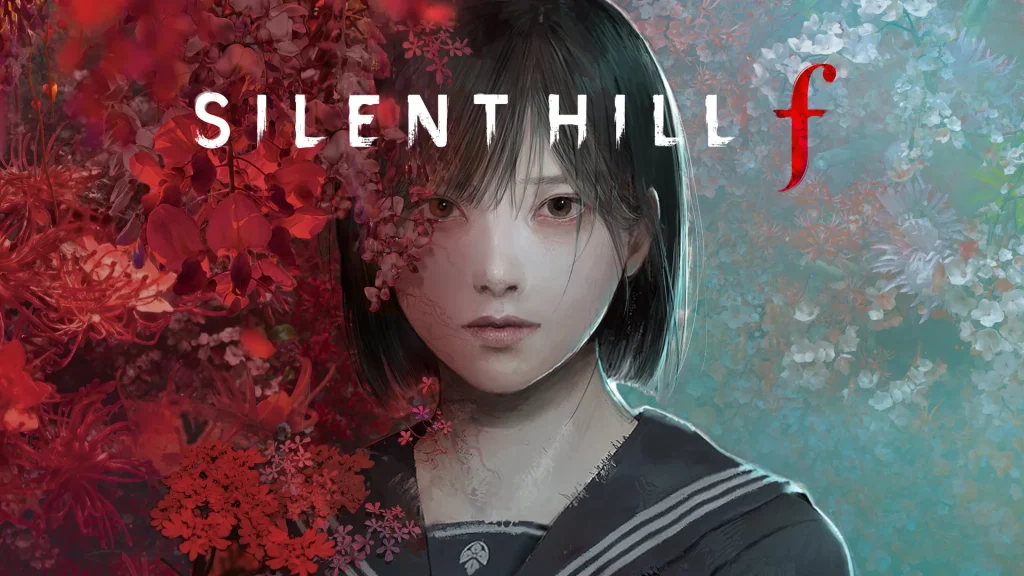Fog rolls across quiet streets and swallows the lamps one by one. Paper charms flutter on a shrine gate as a soft hum builds in your ears. It sounds like a memory that does not want you to leave. Silent Hill f arrives in early access with a new place, a new voice, and a story that belongs to the same unsettling universe while standing on its own feet. The setting is 1960s Japan. The lead is Shimizu Hinako. The town is called Ebisugaoka, and it does not let go.
See the official store page for details, trailers, and patch notes on Steam under Silent Hill f. You can also check the franchise hub at Konami and the dedicated project page from Konami for headline features and story framing.
- Steam store page: Steam page
- Konami series hub: Silent Hill hub
- Game page at Konami: Silent Hill f page
Who is making it and what the team is aiming for
Silent Hill f is developed by NeoBards Entertainment and published by Konami. The scenario is written by Ryukishi07, known for layered mysteries and unsettling shifts from the familiar to the uncanny. Music features work by Akira Yamaoka, whose sound has carried the series for decades. The studio frames the project as a self contained story inside the larger Silent Hill universe. You do not need to know the previous games to follow the plot here, but the tone and craft pull on the same threads that made the series last.
The campaign moves between exploration, puzzle solving, and tense encounters. It is not a shooter and never pretends to be one. The game leans on mood, audiovisual cues, and careful navigation rather than a pile of weapons. The goal is to build dread and then let it bloom in ways that feel beautiful and terrible at once.
Early access status and first reception
Silent Hill f launched in early access on Steam. The first wave of players responded warmly. As shown on your Steam screenshot, 87 percent of 1,691 reviews are positive, which places the rating in the Very Positive range at the time of writing. That signal matters for a horror title that cares about feel. It suggests that players connect with the atmosphere, the lead character, and the slow burn.
Early access means the build changes often. The team can tune performance, camera feel, and puzzle clarity over the coming weeks. It also means content can grow, side activities can deepen, and small frictions can be sanded down before the full release. Keep an eye on the Steam news feed for updates on patches and known issues.
The premise without spoilers
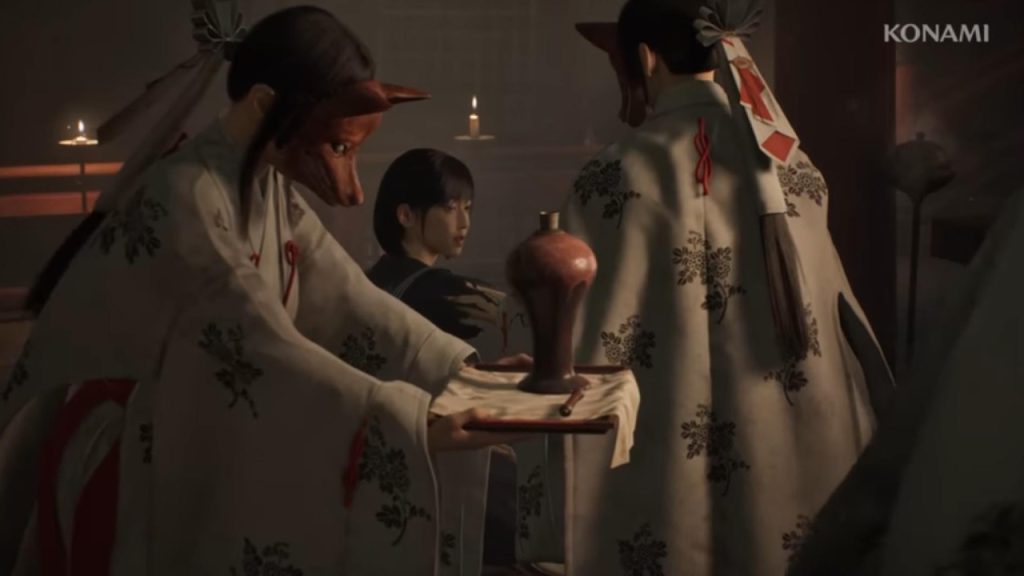
Hinako lives in Ebisugaoka, a small mountain town in 1960s Japan. One day the fog arrives and pulls a quiet curtain over familiar streets. Life thins. Sounds travel wrong. Hallways bend when you are not looking. Something old wakes up under the surface and takes an interest in the people who still walk the town. Hinako does not feel like a hero. She is a student with all the fears that come with that age, but she has a spine that hardens under pressure. The story invites you to follow her through alleys, shrines, school corridors, and homes that remember more than they should.
The game plays a careful hand with supernatural details. The events could be real. They could be the shape of grief. They could be the echo of beliefs that have slept in this valley for a long time. The script keeps questions open and lets small answers land at their own pace. That restraint gives weight to each reveal and keeps you leaning forward.
Where and when it takes place
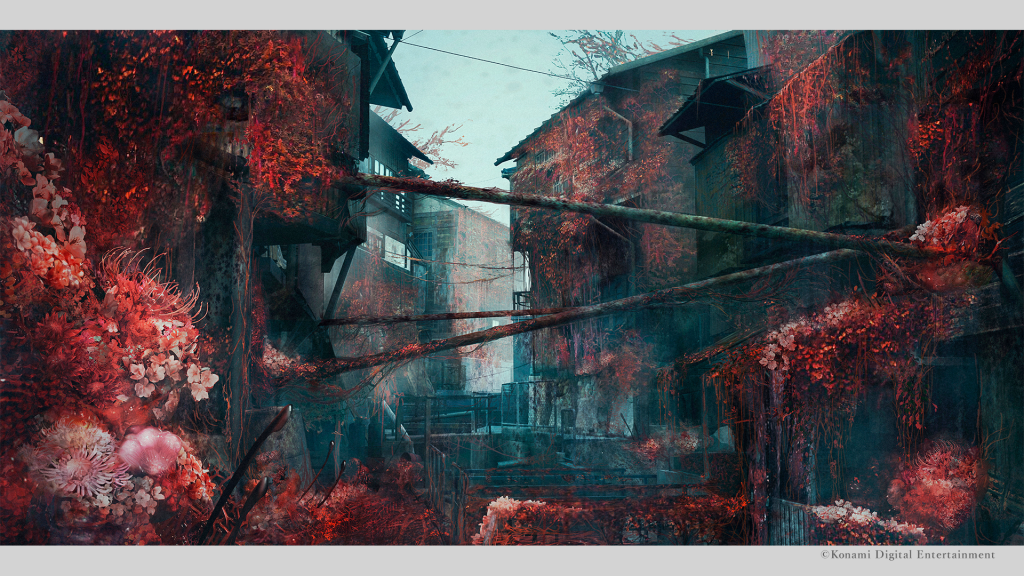
Ebisugaoka sits in the mountains, away from big city noise. The time is the 1960s. You will see that period in the uniforms, the storefronts, the pay phones, and the way homes are built. The town is neither modern nor quaint. It simply feels lived in. The old and the new rub shoulders, and that friction feeds the fear when the fog erases detail. The setting is not a museum. It shapes puzzles, locks, and small tools that only make sense if you have touched wood and paper for years.
The period frame also shapes the social pulse of the story. Rumors travel differently. Authority looks different. Traditions sit closer to daily life. Those details matter because they give the horror a specific texture. When superstition starts to feel like a map, you are halfway to trouble.
The lead and the supporting cast
Shimizu Hinako is the center. She is not a blank slate. She has friends, rivals, and adults in her orbit who all carry private weather that shifts as the fog presses in. The writing puts you close to her. You sit inside glances, pauses, and the small acts people make when they want to appear fine. Those acts never last. The cast speaks like people, not quest givers. They laugh in the wrong places, dodge questions, or push too hard on small topics because the big one is too heavy.
Performance capture and voice work carry that load. The team pairs faces and voices carefully so that doubt, envy, and brief kindness register without long speeches. It keeps the camera close. It trusts silence when needed and lets the score do the rest.
How it plays moment to moment
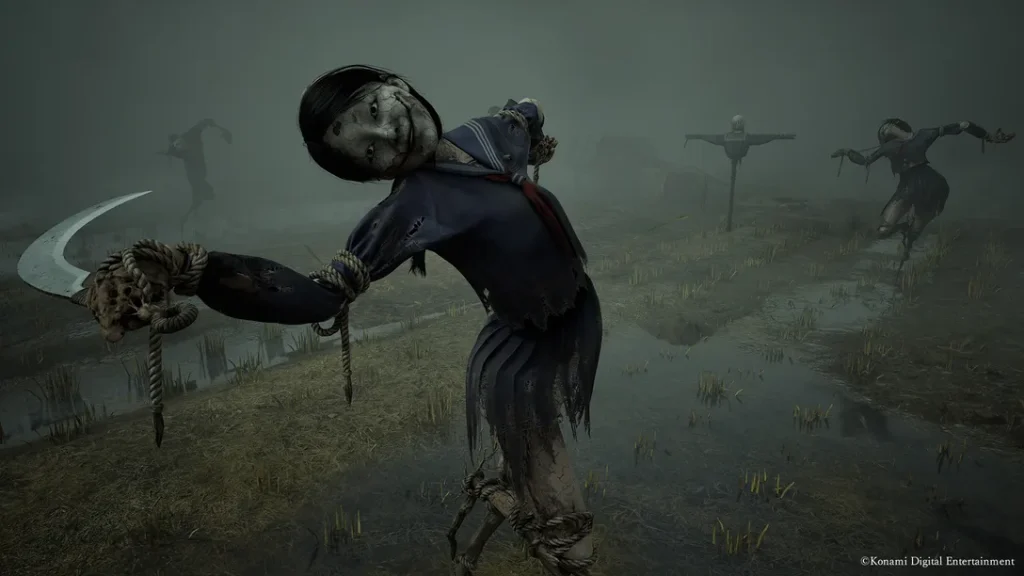
Silent Hill f prefers tension to jump scares. You walk, you listen, you test doors, and you make small maps in your head. Puzzles blend folklore and practical logic. You will read the room, search for patterns, and line up clues that feel handmade. Movement is deliberate. You will avoid rather than crush. When a creature turns a corner, the right move is often to freeze, watch, and wait for a line to open.
The game also supports full controller play, which suits the pace and the way the camera follows intent rather than speed. The loop offers breath between stress peaks. A shrine or a safe room gives you a chance to manage items, change a costume if you have one, and look at the next area without noise in your head.
Themes, inspiration, and the way the game looks and sounds
The script by Ryukishi07 likes to ask whether the thing you fear is external or something you carried in the first place. It leans into social pressure, shame, and the stories teenagers tell when they want to belong. That angle fits the series because Silent Hill has always used the supernatural as a mirror rather than a simple monster factory.
Art direction embraces contrasts. The team speaks openly about beauty and horror sitting in the same frame. The result is imagery that unsettles without losing grace. Surfaces look touchable. Rot carries color where you do not expect it. The studio calls out 4K support and 3D audio on PC. In practice that means whispers have locations, and even a soft scrape behind you changes the way you move.
Akira Yamaoka contributes to the score and leaves fingerprints on the soundscape. Simple motifs return with new weight after a chapter or two. A single detuned instrument can make a hallway feel hostile. The game earns those moments by first letting you breathe.
How it relates to the rest of the series
This is not a direct sequel to any prior plotline. The developers describe it as a self contained story within the Silent Hill universe. That stance is useful. New players can start here and never feel lost, while long time fans still recognize the design values that made the series special. The fog is not a mascot. It is a tool that hides, suggests, and asks you to fill gaps with your own mind. The soundscape builds dread rather than relevance. The monsters are not clones from older games. They feel born in this place and time.
That said, the thoughtful tone, the care for small human nerves, and the way the world bends around guilt will feel familiar to series fans. You will likely spot design winks rather than overt cameos. The binding thread is not a symbol on a wall. It is the way the story treats fear.
Content and structure
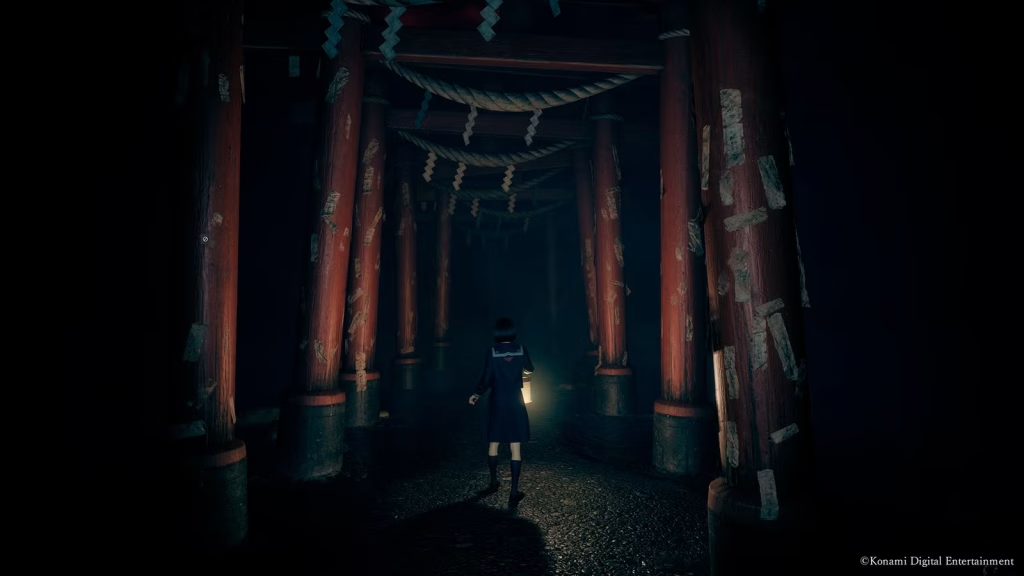
Your first playthrough ends in a fixed conclusion. On repeat runs your choices can change outcomes. The studio lists five endings total. That structure rewards curiosity and careful reading of character motives. It also lines up with the early access model, since the team can tune choice logic and presentation based on feedback without breaking the core path.
Pacing moves between slow exploration and sharp spikes. A school wing can feel calm until a single note slides under the door. A shrine can offer comfort before a new rule breaks your sense of how the town works. The game respects players who take notes and remember small rituals. It also keeps pathing fair, so you rarely feel trapped by the camera or by a clue that never made sense.
System requirements
These requirements are listed on the Steam store page. The notes are useful because they include expected performance at target presets. An SSD is recommended at minimum and required at the recommended level.
PC requirements
| Tier | OS | CPU | RAM | GPU | DirectX | Storage | Notes |
|---|---|---|---|---|---|---|---|
| Minimum | Windows 11 x64 | Intel Core i5 8400 or AMD Ryzen 5 2600 | 16 GB | GeForce GTX 1070 Ti or Radeon RX 5700 | 12 | 50 GB | Aimed at Performance preset about 30 FPS at 720p. SSD recommended. |
| Recommended | Windows 11 x64 | Intel Core i7 9700 or AMD Ryzen 5 5500 | 16 GB | GeForce RTX 2080 or Radeon RX 6800 XT | 12 | 50 GB | Aimed at Performance 60 FPS or Quality 30 FPS at 1080p. 4K possible with DLSS or similar. SSD required. |
What players praise and what they want improved
The Very Positive rating suggests the core is working. Players praise the setting, the slow dread, and the way the story trusts them to meet it halfway. Many reviews single out the score and the spatial audio for making simple rooms feel dangerous. Others enjoy the repeat run structure and how it changes after the first ending.
Since this is early access, expect the usual growing pains. Performance can vary on mid range GPUs, especially if you push high presets without upscaling. Camera feel and exposure changes are active topics in horror communities and may see tuning. Puzzle clarity can also get a pass or two as more players weigh in. The store page notes focus on polish, audio presence, and the balance between exploration pace and threat density.
How the early access model can help this game
Silent Hill thrives on subtlety. Early access gives the team a chance to watch how players move through spaces and where tension dips. Small edits to light, occlusion, and audio triggers can lift fear without brute force. It also gives room to adjust QoL details like interaction prompts, subtitle size, and control curves. Horror depends on focus. When friction drops, atmosphere blooms.
Content pacing is also easier to tune with an audience that returns each week. Optional scenes, notes, and environmental threads can expand without making the core path long. Branch logic for the multiple endings can tighten so that choices feel earned rather than arbitrary. Fans get to see the town evolve from a living place into a haunted one in real time, which is a rare kind of engagement for this genre.
Tips for your first hours
- Play with headphones if you can. The 3D audio gives you real position cues and changes how you walk.
- Take your time in safe spaces. Notes and small props often hint at puzzle rules ahead.
- Do not rush stealth. Watching a patrol for twenty seconds can save you five minutes of trouble.
- Keep an eye on your performance preset. Use upscaling if your frame rate dips during heavy scenes.
- If you find a new item at a shrine, consider what it means for both story and mechanics. The game likes to make rewards carry double weight.
The tone that carries the whole experience
Silent Hill f is quiet even when it is loud. The score has bite, yet it does not shout over your thoughts. The town is strange, but it never becomes a cartoon. The monsters look designed, but they still feel like things that grew here rather than things that walked in. That tone is a hard line to walk in any medium. It works here because the game respects its characters and refuses easy answers.
The protagonist helps. Hinako’s fear makes sense. Her resolve makes sense. She is not looking for triumph. She is trying to get through a day that keeps breaking in new places. When she succeeds, it feels like a human win rather than a system win. Horror sticks when you care about the person who has to cross the hall.
Should series fans jump in now
If you love Silent Hill for mood, symbolism, and human stakes, this is worth a look even in early access. The setting gives fresh texture without losing the shape of fear that fans expect. If you come for puzzles and the dread of quiet halls, the current build already delivers those parts well. If you want a long action loop, this is not that game, and it does not try to be.
Waiting for the full release is reasonable if you prefer a single smooth run with no patch churn. Early access offers a different pleasure. You can watch the edges sharpen and feel the town gain weight over time. Either way, the work on display points to a strong entry that earns its place in the series.
Closing thoughts
Silent Hill f arrives with a confident voice. It gives the series a new home and era and uses both to tilt the ground under your feet. The early access build already holds a steady atmosphere, a lead worth rooting for, and a soundscape that can turn a shadow into a warning. The Very Positive reception on Steam shows that players feel the pull. With continued polish, balanced performance targets, and careful attention to small details, this story can grow into one of the year’s standout horror experiences.
